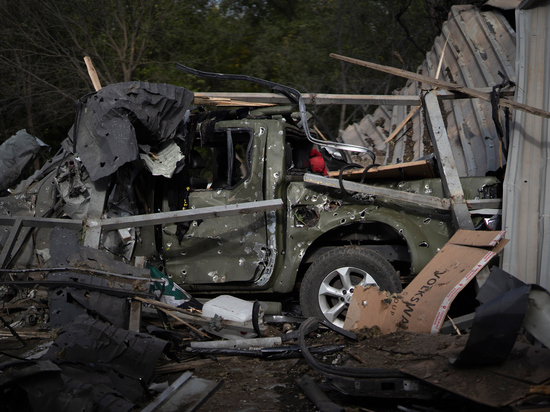Kamikaze drones have begun to play a crucial role
After yesterday’s massive attack on headquarters and infrastructure facilities on the territory of Ukraine in response to the terrorist attack against the Crimean Bridge, some felt that the demonstration action would be a one-off. And they were wrong: on Tuesday, the strikes continued. Although their intensity was less than on October 10, but the effectiveness, judging by photos and videos from the arrival sites, as well as by power outages in a number of regions of Ukraine, was not lower.

Photo: AP
The geography of strikes is very extensive. So far, it is easier to name those regions of Ukraine for which there were no arrivals. These are the Transcarpathian and Chernivtsi regions. On October 11, the strikes hit targets in Vinnytsia, Zaporizhia, Mykolaiv, Kiev, Rivne, Lviv, Khmelnytsky and Odessa regions.
The Russian army selectively uses the weapons it has. Long-range X-101 air-launched cruise missiles are used for strikes on the most remote western regions of Ukraine. It is believed that the launches of these missiles are carried out hundreds of kilometers from the borders with Ukraine. The maximum range of missiles, for a moment, is over 5000 kilometers — a European scale.
The entire territory of Ukraine is also covered without restrictions by sea-based missiles – “Calibers”. They can be launched even from the Black Sea and even the Caspian Sea, where there is a whole squadron of ships with such missiles.
But for attacks on objects on the territory of those Ukrainian regions that are closer to our borders, the Geran-2 barrage ammunition is actively used. The flying “Geranium” has a good range and duration of flight. And, as the photos of the objects hit with this weapon show, they are highly effective.
So, military blogger Yuri Podolyaka reported that in the Vinnytsia region two devices “Geran-2” disabled Ladyzhinskaya thermal power plant.
On October 11, a blow was struck at the Shepetovka railway station — an important junction through which military echelons from the west of Ukraine to the Donbass go. Now they will stand. In addition, the Shepetovsky repair plant was destroyed, where armored vehicles of the Armed Forces of Ukraine were restored.
They hit another transport hub — Pavlograd. From it there are highways to Pokrovsk, Kurakhovo, Maryinka, as well as towards Kramatorsk and Slavyansk, which are under the control of the Armed Forces of Ukraine.
Two fuel storage bases for the Armed Forces of Ukraine, 5 weapons depots, including the joint grouping of Ukrainian troops “Primorye” near Nikolaev, were destroyed. From there, in recent months, there have been constant attacks by the AFU in the Kherson direction.
According to the Russian military, all the targets of the strikes on October 10 and 11 have been achieved. Zelensky, however, says that the Ukrainian air defense worked well — shot down dozens of missiles and drones. But few people believe him. It is no coincidence that the first thing he did after the strikes was to ask NATO for more air defense.
An air operation, like a ground operation, requires every possible support. Including aviation, in order to disable anti-aircraft systems and enemy aircraft. Photos of the use of the latest R—37 air-to-air missile by Russian fighters have appeared in Ukrainian social networks. Such missiles are designed to destroy the Ukrainian MiG-29 and Su-27.
The air operation will certainly continue. At least, the fighters and commanders on the front line really hope so. The well-known military observer Vladlen Tatarsky said on this score: “We need to win, we can’t mess with Ukraine forever. If we hold out, they will create problems for us in other places.”

